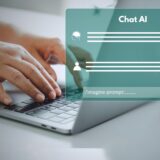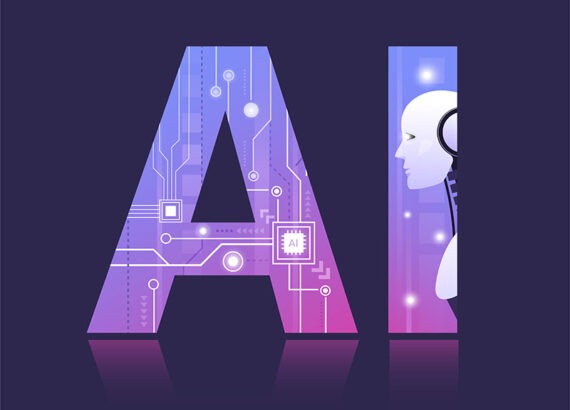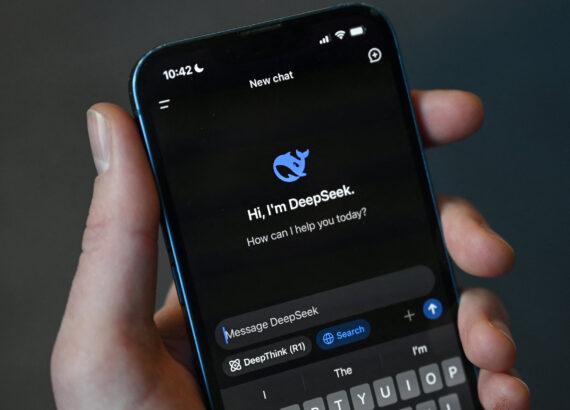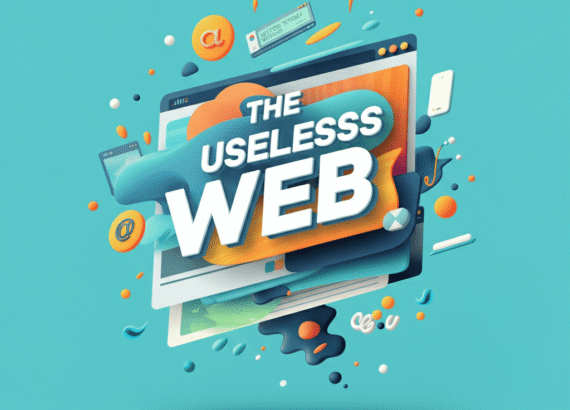Fascinating Examples of How AI is Enhancing Creativity in the Arts
The advent of artificial intelligence (AI) has brought about a remarkable transformation in various industries, and the arts are no exception. The fusion of AI and creativity has given rise to fascinating possibilities, challenging traditional notions of artistic expression. This article explores six captivating examples of how AI is enhancing creativity in the arts. From painting and music composition to film and literature, we delve into the power of AI to augment and amplify human creativity. By examining these intersections, we gain insight into the evolving role of AI as a collaborator, facilitator, and catalyst for innovation in the artistic realm.
1. Introduction: The Intersection of AI and Creativity in the Arts
The Emergence of AI in the Artistic Landscape
Artificial Intelligence (AI) has increasingly found its place in the world of art, revolutionizing the way we create and consume artistic works. Once considered a realm solely reserved for human creativity, AI has made significant strides in recent years, blurring the lines between man and machine.
Exploring the Potential of AI in Enhancing Creativity
While some may fear that AI will replace human artists, the reality is that it is complementing and enhancing the creative process. AI’s ability to analyze vast amounts of data and learn from existing art has opened up new possibilities for innovation and exploration. In this article, we will delve into six fascinating examples of how AI is enhancing creativity in the arts.
2. Enhanced Visual Arts: AI’s Impact on Painting, Sculpture, and Photography
AI-assisted Painting Techniques: Blurring the Line Between Human and Machine
AI has empowered painters with new possibilities, allowing artists to experiment with unconventional techniques and styles. From generating color palettes to aiding in brushstroke analysis, AI algorithms have become indispensable tools for painters, blurring the line between human expression and computational assistance.
Sculpting with Intelligence: AI’s Influence on Sculpture and 3D Modeling
In the realm of sculpture and 3D modeling, AI has brought about a revolution. Artists can now leverage AI algorithms to generate complex and innovative designs, pushing the boundaries of what was previously thought possible. This fusion of human creativity and AI’s computational power has sparked new dimensions of sculptural art.
Revolutionizing Photography: AI-driven Enhancements and Manipulations
AI has also transformed the world of photography, enabling photographers to enhance and manipulate their images with unprecedented ease. From automated editing to intelligent image recognition, AI algorithms have opened up new avenues for photographers to express their visions and create captivating visual narratives.
3. Augmented Music Composition: Exploring AI’s Role in Creating Musical Pieces
AI as a Composer’s Assistant: Innovations in Melody and Harmony Generation
AI has taken on a collaborative role in music composition, assisting composers in generating melodies and harmonies. By analyzing vast musical datasets and learning from existing compositions, AI algorithms can provide composers with innovative ideas and fresh musical perspectives.
Remixing and Sampling: AI’s Contribution to Music Production
The field of music production has also witnessed the transformative power of AI. Through the use of machine learning algorithms, AI can assist in remixing and sampling existing musical pieces, offering new ways to reinterpret and reinvent musical genres.
Pushing Musical Boundaries: Experimenting with AI-generated Sounds and Styles
AI’s ability to simulate and generate sounds has pushed the boundaries of what is considered music. By training AI models on diverse musical styles, composers and producers have ventured into uncharted territory, creating entirely new genres and sonic landscapes.
4. Transforming Film and Animation: How AI is Revolutionizing Visual Storytelling
Automated Video Editing: Streamlining the Post-production Process
AI has revolutionized the world of film and animation by automating certain aspects of post-production, such as video editing. With AI algorithms capable of analyzing scenes and suggesting edits, filmmakers can streamline the editing process, allowing for more efficient storytelling.
Realistic Visual Effects: AI’s Impact on Computer-generated Imagery (CGI)
AI’s impact on computer-generated imagery (CGI) has been nothing short of transformative. With AI models capable of generating realistic visuals, from breathtaking landscapes to awe-inspiring creatures, filmmakers and animators can create immersive and visually stunning worlds that were once unimaginable.
AI-generated Storytelling: From Scriptwriting to Plot Development
From scriptwriting to plot development, AI has also made its mark in the storytelling process. AI algorithms can analyze vast amounts of existing scripts and narratives, providing insights and suggestions to aid in the creative process. This collaboration between humans and AI has led to thought-provoking and captivating storylines in film and animation.
With AI’s continued advancement, the possibilities for enhancing creativity in the arts are boundless. By embracing AI as a tool and collaborator, artists, musicians, filmmakers, and creators of all kinds can embark on exciting new artistic journeys, pushing the boundaries of what was once thought possible.

5. AI as a Collaborative Tool: Unleashing New Possibilities in Dance and Theater
Artificial Intelligence has found its place in the world of dance and theater, not as replacements for human performers, but as collaborative tools that enhance creativity. From choreography to interactive theater experiences, AI is revolutionizing the way we approach these art forms.
Choreography and Dance: AI’s Influence on Movement and Performance
AI algorithms are being utilized to explore new possibilities in movement and performance. By analyzing vast amounts of dance data, AI can generate innovative choreography and suggest movements that push the boundaries of what is humanly possible. This collaboration between humans and machines has led to breathtaking performances that captivate audiences worldwide.
Interactive Theater Experiences: Engaging Audiences with AI-driven Interactions
With AI-driven interactions, theater experiences are becoming more immersive and engaging than ever before. AI-powered systems can respond to audience input, altering the narrative in real-time and creating personalized experiences. This level of interactivity allows viewers to become active participants, blurring the line between spectator and performer.
Enhancing Stage Design: AI’s Contribution to Set and Lighting Design
AI is making its mark in the world of stage design by contributing to set and lighting design. By analyzing scripts and understanding the emotional intent of scenes, AI algorithms can generate lighting and set designs that enhance the overall atmosphere and impact of performances. This collaboration between human creativity and AI technology results in visually stunning and unforgettable productions.
6. AI in Literature and Writing: Pushing the Boundaries of Creativity in Text-based Art
Artificial Intelligence is not just limited to the performing arts; it is also pushing the boundaries of creativity in literature and writing. From AI-generated poetry to language generation models, AI is revolutionizing the way we approach text-based art.
AI-generated Poetry and Prose: Exploring the Beauty of Machine-authored Literature
AI algorithms are now capable of generating poetry and prose that rival the work of human authors. By analyzing vast collections of literature, AI systems can mimic writing styles and create original pieces of art. This advancement in AI-generated literature opens up new possibilities for exploring the beauty of machine-authored writing.
Language Generation Models: AI as Co-writers and Editors
AI language generation models have become valuable co-writers and editors. These models can suggest ideas, improve sentence structures, and even generate entire paragraphs. By collaborating with AI, writers can harness the power of technology to enhance their writing process and push the boundaries of their creativity.
AI-powered Writing Assistance: Enhancing the Creative Process for Authors
AI-powered writing assistance tools are making the creative process easier and more efficient for authors. These tools can provide suggestions, correct grammar and spelling, and even offer alternative word choices. By utilizing AI-powered writing assistance, authors can focus on their artistic vision while benefiting from the efficiency and accuracy of AI technology.
Conclusion
As we reflect on the captivating examples showcased in this article, it becomes evident that AI is revolutionizing the creative landscape. The potential for AI to enhance and push the boundaries of artistic expression is truly exciting. However, it is crucial to consider the ethical implications and ensure that AI remains a tool that amplifies human ingenuity rather than replacing it. The future of AI in the arts holds immense promise, opening doors to new artistic frontiers and enabling collaborations between humans and machines that were once unimaginable. With careful consideration and responsible implementation, AI has the potential to shape a vibrant and innovative future for creativity in the arts.
FAQ
1. How does AI enhance creativity in the arts?
AI enhances creativity in the arts by leveraging advanced algorithms and machine learning. It can generate new ideas, assist in the creation process, and provide innovative tools for artists to explore. For example, AI can generate music compositions, suggest visual styles, and even create interactive experiences for audiences.
2. Is AI replacing human artists in the creative process?
No, AI is not replacing human artists. Instead, it serves as a powerful tool to augment human creativity and expand artistic possibilities. AI can assist artists in generating ideas, providing inspiration, and streamlining certain aspects of the creative process. The collaboration between humans and AI often results in unique and groundbreaking artistic expressions.
3. What are the ethical considerations when using AI in the arts?
Ethical considerations arise when using AI in the arts, particularly concerning issues such as attribution and ownership of AI-generated artwork, potential biases embedded in AI algorithms, and the impact on employment opportunities for human artists. It is important to navigate these considerations and ensure responsible use of AI technology to preserve the integrity and diversity of the artistic domain.
4. What does the future hold for AI and creativity in the arts?
The future of AI in the arts is promising and full of possibilities. AI will likely continue to evolve and become an increasingly integral part of the creative process. However, it is crucial to strike a balance between AI’s capabilities and human ingenuity. The future may witness further collaborations between humans and AI, pushing artistic boundaries, and unlocking new realms of creativity that were once unimaginable.
Thank you for reading 🙂


















